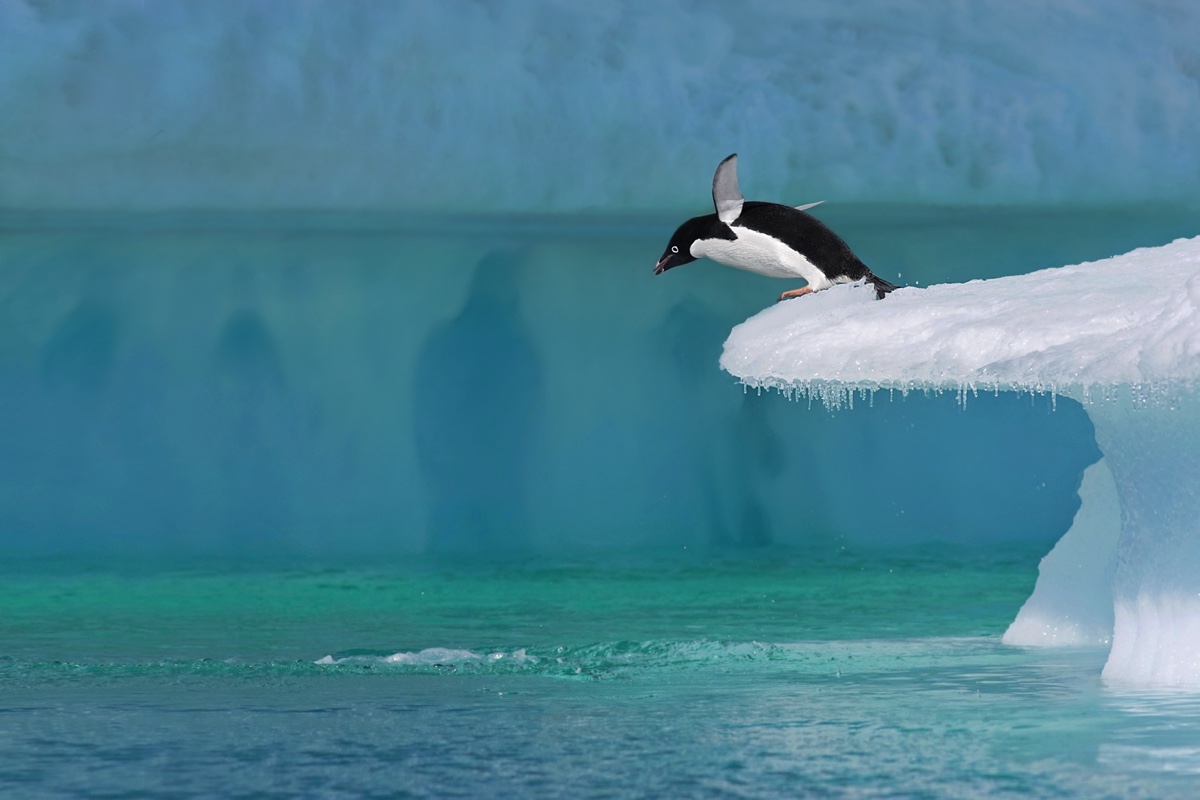Just 13% of the Ocean Is Untouched by Humans

Oceans cover approximately 70 percent of the earth's surface, and it seems almost none of that marine expanse is off-limits to adventurous and resource-needy humans.
Just 13.2 percent of the world's seas — or about 20.8 million square miles (54million square kilometers) — remains truly wild, a new study suggests. (For comparison, Asia covers an area of 17.2 million square miles, or 44.5 million square km.)
"Almost all of that wilderness is located in the Arctic, the Antarctic or around remote, Pacific Island nations," study co-author Kendall Jones, a doctoral student at the University of Queensland in Australia and a conservation planning specialist with the Wildlife Conservation Society, told Live Science.
"And in coastal regions, where human activity is the most intense, there's almost no wilderness left at all," Jones added. "And we also found that almost all wilderness is currently unprotected, leaving it vulnerable to being lost at any time as improvements in fishing and shipping technology allow us to get further into the ocean and fish deeper." [Marine Marvels: Spectacular Photos of Sea Creatures]
Perhaps just as disturbing, Jones said, is that much of the wilderness is unprotected: Just 4.9 percent of that marine wilderness exists in marine protected areas, where regulations restrict human activities, the study authors found.
Finding the wilderness
To identify wilderness, which the study authors defined as areas "free from intense human activity," Jones said, they compiled data on the levels of various human activities in the seas. Then, they identified the areas showing the least of these activities.
Specifically, they assigned each square kilometer of ocean a value for how much it was affected by each of 15 human-caused factors, such as fishing, commercial shipping, and runoff from nutrients and pesticides, and four climate-change-related factors, including ocean acidification and sea-level rise.
Get the world’s most fascinating discoveries delivered straight to your inbox.
To qualify as wilderness, an area had to pass two tests: It had to score within the lowest 10 percent of the range of impact values for all 15 human factors, and it had to score within the lowest 10 percent of values for cumulative impact, which included all 15 factors plus the climate-change-related factors. (The researchers did not include climate change within the first test because, if they had, none of the ocean would have qualified as wilderness, Jones said.)
They then compared the wilderness areas with maps of marine protected areas to determine which of the wilderness areas were protected.
Not much is untouched by humans
Most countries have "some patches left" of wilderness, Jones said, but not large ones. In the U.S., for example, they found some marine wilderness in the waters off the northern coast of Alaska, Jones said.
Yet over half — 66 percent — of the marine wilderness exists in the high seas, which are waters over which no country has jurisdiction, Jones said. Some background: Every country controls the natural resources in the waters out to a certain distance — 200 nautical miles — from their shores, Jones said. The high seas are so far from land that no country controls them. Because of the high seas' remoteness, the researchers had expected to find high levels of wilderness there, but they found less wilderness than they had anticipated, Jones said. [In Photos: The Wonders of the Deep Sea]
"Our results show there is almost nowhere in the ocean that people aren't interested in using for some purpose," Jones added.
The researchers also found that, as previous research had indicated, wilderness areas had much greater biodiversity than non-wilderness areas. Wilderness areas possessed a larger variety of species, including rare species, than non-wilderness areas, as well as unique combinations of species, the authors wrote in their study. The mixes of species found in these areas are unique because they include top predators alongside other species, Jones noted. "In non-wilderness areas, often the top predators are gone," Jones said.
In addition to preserving biodiversity, wilderness areas are like time machines that reveal the way the oceans were before human activities began to degrade them.
Protecting the wilderness
So, what does the future hold? That depends on our course of action. "Protecting [marine wilderness areas] is crucial if we're going to protect the full range of marine biodiversity into the future," Jones said.
To do so, the authors believe that first, countries should identify the wilderness areas within their jurisdiction that are in the greatest danger of being lost and designate them as marine protected areas, Jones said.
Conservation in the high seas is more difficult since, by definition, no country has jurisdiction there, he added.
Still, the United Nations is debating a measure for high-seas conservation, which would allow the designation of protected areas in the high seas, Jones said, adding that multinational regional fisheries management organizations (RFMOs) — "international organizations formed by countries with fishing interests in an area," as the European Commission defines them — could also protect wilderness in the high seas by agreeing to leave certain areas alone, Jones said.
Finally, fishing in the high seas is profitable only because of government subsidies that make traveling to such remote areas possible, Jones said. These subsidies are highest in Japan and Spain, followed by China, South Korea and the United States, according to a recent study. "Subsidy reform for those nations could be another way to discourage the erosion of these last wilderness areas," Jones said.
In general, the authors wrote, conservation efforts on both land and sea have neglected the protection of wilderness areas in favor of trying to save individual endangered species.
"If you were to use a health analogy, the current system is kind of like a government spending all of its health budget on emergency heart surgery, which is the species-extinctions end, without spending any money on preventing those heart conditions from occurring in the first place," Jones said. Jones and his co-authors believe that conservation policies should not only try to save endangered species but also protect species and ecosystems from becoming threatened to begin with.
"What we're arguing for is a dual-pronged approach, where at one end, you're stopping species and ecosystems [from] going extinct, and at the other end, you're saving the last intact places that are under low impact," Jones said.
The study is detailed today (June 26) in the journal Current Biology.
Original article on Live Science.

Ashley P. Taylor is a writer based in Brooklyn, New York. As a science writer, she focuses on molecular biology and health, though she enjoys learning about experiments of all kinds. Ashley's work has appeared in Live Science, The New York Times blogs, The Scientist, Yale Medicine and PopularMechanics.com. Ashley studied biology at Oberlin College, worked in several labs and earned a master's degree in science journalism from New York University's Science, Health and Environmental Reporting Program.


